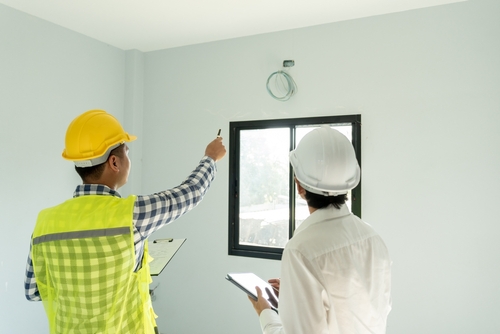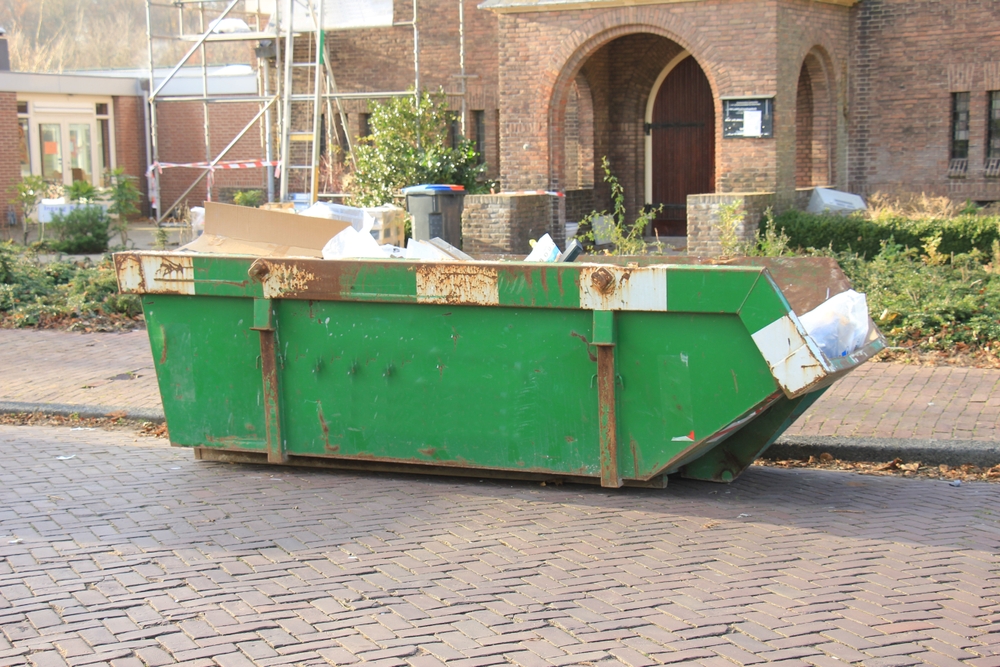June 28, 2024 - Benjamin Ehinger
Do It Yourself Home Inspection Checklist: Essential Steps for Homeowners
CALL NOW 844-762-8449
A thorough home inspection is essential whether you’re preparing to sell or buy a property. By conducting a DIY home inspection, you can identify potential issues ahead of time and address them before they become costly repairs. Using a home inspection checklist ensures you don’t overlook important areas of the home, from exterior grounds to internal systems and components.
Start with the exterior inspection by assessing the condition of the landscaping, driveway, and drainage systems. Ensure there are no signs of leaks or structural issues in the home’s foundation. Inside, take the time to evaluate each room, focusing on the functionality of the kitchen and bathrooms, as well as the integrity of electrical and plumbing systems.
In addition to the main living areas, don’t forget to inspect spaces like the attic, basement, and garage for proper insulation and potential hazards. This detailed approach will help you compile a comprehensive report that can be used for negotiating repairs or understanding your home’s condition better.
 During your DIY home inspection, it’s essential to carefully examine walls, ceilings, floors, and trim for issues like stains, cracks, and damage. Paying attention to these elements can help maintain the structural integrity and aesthetic appeal of your home.
During your DIY home inspection, it’s essential to carefully examine walls, ceilings, floors, and trim for issues like stains, cracks, and damage. Paying attention to these elements can help maintain the structural integrity and aesthetic appeal of your home.
 Focusing on both roofing and ventilation as well as the quality of insulation ensures your attic remains energy-efficient and free from damage.
Focusing on both roofing and ventilation as well as the quality of insulation ensures your attic remains energy-efficient and free from damage.
 A thorough examination of your lot and grounds is crucial when conducting a home inspection. Focus on the condition of the landscaping, trees, walkways, and fences to identify any potential issues that could impact your home’s integrity and safety.
A thorough examination of your lot and grounds is crucial when conducting a home inspection. Focus on the condition of the landscaping, trees, walkways, and fences to identify any potential issues that could impact your home’s integrity and safety.
 Completing a thorough inspection is crucial for addressing potential home issues. Properly compiling your findings and understanding their implications can provide clear guidance on necessary repairs and enhance your negotiation power during the home buying process.
Completing a thorough inspection is crucial for addressing potential home issues. Properly compiling your findings and understanding their implications can provide clear guidance on necessary repairs and enhance your negotiation power during the home buying process.
Key Takeaways
- A home inspection checklist is crucial for covering all essential areas.
- Focus on both exterior and interior inspections, including systems and safety features.
- Compile findings into a comprehensive report for better decision-making.
Preparing for Your DIY Home Inspection
Performing a DIY home inspection requires careful planning and the right tools. This guide highlights key areas to focus on and the equipment you’ll need to ensure a thorough inspection.Understanding Inspection Basics
Start by knowing what to look for in your home. You should assess both the interior and exterior, checking for structural integrity and functionality. Major areas include:- Foundation and Structure: Look for cracks or signs of settling.
- Roofing: Inspect for damaged or missing shingles.
- Plumbing: Check for leaks, ensuring pipes and fixtures are functioning.
- Electrical Systems: Make sure outlets and switches work and are safe.
Tools and Equipment Needed
Gather essential tools to conduct your inspection efficiently. Some must-have items include:- Flashlight: Critical for inspecting dark areas like attics and crawl spaces.
- Pen and Notepad: For taking detailed notes during your inspection.
- Camera: Document potential problems with clear photos.
- Protective Gear: Use gloves and eyewear to stay safe during inspections.
Exterior Inspection
Inspecting the exterior of your home involves checking the roof, siding, trim, foundation, and drainage. Paying attention to these areas ensures your home is protected from the elements and maintains its structural integrity.Evaluating the Roof
Start by examining the roof for any missing or damaged shingles. Look closely for signs of wear and tear, such as curling, cracking, or lifting shingles. Check the condition of the eaves and soffit, as these areas often indicate issues with moisture or pests. Inspect the gutters and downspouts. Ensure they are securely attached and free of debris to facilitate proper drainage. A clear gutter system prevents water from damaging your roof and foundation. If your home has a chimney, inspect it for cracks and signs of wear. Ensure the flashing around the chimney is intact to prevent leaks.Siding and Trim Examination
Take a close look at all exterior walls, focusing on the condition of the siding. For wood siding, look for signs of rot or damage, particularly near the ground or areas not protected by roof overhangs. Push on the siding to check for softness, indicating potential decay. Examine the trim around windows and doors. Ensure that caulking is intact and provides a good seal. Cracked or missing caulking can let moisture into your home, causing damage. Also, check for insect damage, which can manifest as holes or channels in the wood. Pay special attention to the north side of the house, as it is often more susceptible to moisture-related issues.Foundation and Drainage
Inspect the foundation for cracks or signs of settling. These can indicate underlying structural issues that may need professional attention. Use a probe to check for softness in the wood at the base of the house, which can suggest rot or termite damage. Make sure the ground around your home slopes away from the foundation. Proper grading prevents water from pooling near your foundation, reducing the risk of leaks or flooding. Check that gutters, downspouts, and drainage systems direct water away from the house. Verify that water is being channeled at least several feet away from the foundation to maintain a dry and stable structure.Interior Basics
 During your DIY home inspection, it’s essential to carefully examine walls, ceilings, floors, and trim for issues like stains, cracks, and damage. Paying attention to these elements can help maintain the structural integrity and aesthetic appeal of your home.
During your DIY home inspection, it’s essential to carefully examine walls, ceilings, floors, and trim for issues like stains, cracks, and damage. Paying attention to these elements can help maintain the structural integrity and aesthetic appeal of your home.
Wall and Ceiling Review
Start by inspecting the walls and ceilings for cracks, stains, and peeling paint. Look for any discoloration as this could indicate water damage or mold growth. Pay particular attention to areas around windows and doors, as these are common spots for leaks. Use a flashlight to examine corners and joints where walls meet the ceiling. Any signs of sagging or separation may hint at structural problems. Check for cracks, especially around doorframes and windows, as they might reveal settling issues. Use a level to verify if the walls are straight. Any bowing or bulging could suggest underlying issues that require professional consultation. Be meticulous with your inspection to catch problems early.Floor and Trim Survey
Next, survey the floors for scratches, cracks, and uneven surfaces. Walk across each room and note any soft spots or creaking, which could signify underlying subfloor damage. Hardwood and tile floors, in particular, should be free from significant gaps or lifting. Check baseboards and trim for damage or discoloration. Look for signs of rot or termite damage, such as soft spots or sawdust-like debris. Ensure any trim or moldings are securely attached, as loose trim can be a sign of neglect or hidden issues. Pay attention to transitions between different flooring materials. Any misalignment or unevenness should be noted for potential repairs. Your diligence in inspecting these details can prevent minor issues from developing into costly repairs.Kitchen and Bathroom Audit
When conducting a do-it-yourself home inspection, it’s crucial to assess the performance of kitchen and bathroom appliances, as well as the condition of the plumbing and fixtures. This ensures both areas are functional and free of issues that could lead to costly repairs.Appliance Performance
In the kitchen, start by checking the oven. Ensure it heats evenly and that the controls function properly. Inspect the dishwasher for signs of water leaks and verify that it completes cycles without errors. Test the refrigerator by confirming it maintains the correct temperature and the freezer remains frost-free. Examine all kitchen drawers and cabinets, making sure they open and close smoothly, without sticking or off-track issues. For bathrooms, check ventilation fans to ensure they remove moisture effectively. In both rooms, make use of a cell phone or camera to document any irregularities for reference.Plumbing and Fixtures
Inspect the sink, ensuring there are no leaks under the base. Check water pressure by turning on faucets and seeing if the flow is steady and strong. Evaluate the caulking around the sink, counters, and backsplash to ensure it’s intact and free from cracks. In the bathroom, check that the bathtub, shower, and toilet drain properly. Look underneath sinks for evidence of leaks or water damage. Verify that caulking around the toilet, bathtub, and shower is in good condition and not peeling or missing. Tiles near sinks and around the bathtub should be secure and free from the need for repair or re-grouting. Make sure to use a flashlight to inspect darker or less accessible areas to ensure nothing is overlooked.Systems and Components
When performing a DIY home inspection, it’s essential to carefully evaluate key systems and components to ensure the home’s safety and functionality. This involves meticulous checks on the HVAC system, electrical systems, and plumbing.HVAC System Check
The HVAC system plays a vital role in heating and cooling your home. Begin by inspecting the furnace and air conditioning units. Look for any signs of rust, leaks, or corrosion, which can indicate larger issues. It’s crucial to change air filters regularly and verify that the thermostat is functioning correctly. Check the vents and ducts for blockages or debris. Ensure that air is flowing freely and consistently from each vent. Test both the heating and cooling functions by running the system through a full cycle. Listen for unusual noises that could signal problems with the motor or fan. Inspect any visible pipework and connections, ensuring they are secure and without signs of wear. Proper maintenance and regular servicing can extend the life of your HVAC system and improve efficiency, saving on energy costs.Electrical System Assessment
Your home’s electrical system must be in good working order to prevent hazards such as fires and electrocution. Begin by inspecting the main electrical panel. Check for any outdated fuses or breakers and ensure that all labels are readable and accurate. Test all outlets and switches throughout the home. A multimeter can help verify proper voltage levels. Replace any outlets that are damaged or not securely fastened. Make sure GFCI outlets are installed in areas with frequent water use, such as bathrooms and kitchens. Inspect all visible wiring for wear and damage. Ensure that all connections are tight and that there is no fraying or exposed wiring. Proper electrical maintenance is key to a safe home environment.Plumbing System Scrutiny
A thorough plumbing inspection can prevent water damage and ensure your home’s water systems are functioning correctly. Start by checking under sinks for leaks, and inspect pipe joints for signs of corrosion or mineral buildup. Test all faucets and showers. Ensure that water flow is smooth and consistent, and investigate any low pressure issues that could indicate blockages or leaks. Listen for unusual sounds when running water. Inspect the water heater for rust or leaks. Confirm that the temperature settings are appropriate and that safety valves are operational. Check for any signs of moisture or pooling water around the base of the water heater, which could indicate a potential problem. If you encounter any issues during your inspection, consider consulting a professional to address and resolve them. Regular inspection and maintenance can keep your home’s plumbing system in optimal condition.Attic and Insulation Review
 Focusing on both roofing and ventilation as well as the quality of insulation ensures your attic remains energy-efficient and free from damage.
Focusing on both roofing and ventilation as well as the quality of insulation ensures your attic remains energy-efficient and free from damage.
Roofing and Ventilation
Inspect the roofing structure for any signs of leaks or damage. Look for cracks, mold, or deterioration on the rafters and joists. Water stains may indicate leaks that require immediate attention. Check the flashing around chimneys and vents; damaged flashing can lead to water penetration and rot. Proper ventilation is crucial to prevent moisture buildup. Ensure that soffit vents, ridge vents, and gables are clear of obstructions. Good ventilation helps in maintaining a dry attic and prevents mold growth. This setup also helps in reducing cooling costs during the summer.Insulation Quality
Evaluate the insulation levels across the attic. If the insulation is level with or below the floor joists, additional attic insulation may be necessary to improve energy efficiency. Ideally, the insulation should cover the joists to prevent heat loss. Check for gaps, compressions, or areas where the insulation appears disturbed. Inadequate insulation can lead to high energy bills and an uncomfortable home. Also, look for evidence of pests, as they can damage insulation material. Maintain a consistent R-value based on your region’s recommended levels to ensure optimal thermal performance. By carefully assessing these aspects, you can enhance your home’s energy efficiency and structural integrity. For more tips on attic inspections, visit the Attic Inspection Checklist and DIY Attic Inspection Tips.Basement and Crawl Space Examination
Inspecting your basement and crawl space involves careful scrutiny for moisture, water leaks, and the integrity of the structural components to ensure the safety and durability of your home.Moisture and Water Intrusion
Check for moisture and water intrusion signs, such as damp spots, puddles, or water stains on the walls and floors. Pay particular attention to corners and areas near windows or vents. Use a flashlight to look for subtle signs of dampness that may indicate leaks. Examine the foundation for cracks or spalling which could allow water to seep in. Ensure that there are no blocked drains, and check that the sump pump is functioning correctly. Look for mildew or mold, as these can signify persistent moisture problems. If you detect a musty odor, it might indicate hidden water damage or dampness.Structural Integrity
Assess the structural integrity by inspecting for cracks, shifts, or any settlement in the basement and crawl space. Examine the floor joists and beams for sagging or excessive deflection. Look for any rust on metal components, which might also suggest moisture issues. Check wooden structures for signs of termites or decay. Poke the wood with a screwdriver to see if it is soft or crumbly. Also, inspect the insulation and vapor barriers to ensure they are intact and doing their job in preventing moisture buildup. Make note of any significant deflections or warping in the foundation walls. Regularly performing these checks can help you catch potential problems early, saving you from costly repairs down the road.Garage and Storage Spaces
Ensuring your garage and storage spaces are in peak condition involves evaluating both the garage door functionality and the state of storage areas. This helps you maintain safety, efficiency, and convenience.Garage Door Functionality
Start by inspecting the garage door’s operation. Check whether the door opens and closes smoothly without sticking or producing unusual noises. Pay attention to the garage opener function. Ensure the remote control and wall switch operate the door efficiently. Test the safety sensors by placing an object in the door’s path; the sensors should reverse the door immediately. Inspect the door’s hardware. Look at springs, cables, rollers, and tracks for signs of wear or damage. Lastly, examine the weather stripping around the door edges. Good stripping prevents drafts, water infiltration, and pests from entering the garage. Replace any damaged or worn-out weather stripping.Storage Area Condition
Evaluate the storage area’s condition to ensure it’s organized and safe. Begin by checking the floor. Look for cracks, stains, or any signs of water damage. A smooth, clean floor is essential for safety and ease of movement. Inspect how flammable materials are stored. They should be in clearly labeled, secure containers and kept away from sources of heat or sparks. Look at shelving units and storage racks. Ensure they are sturdy and not overloaded. Check for pests. Look for droppings, nests, or signs of gnawing. Effective pest control measures maintain cleanliness and safety. By maintaining these elements, your garage and storage spaces will be safe and functional.Lot and Grounds Survey
 A thorough examination of your lot and grounds is crucial when conducting a home inspection. Focus on the condition of the landscaping, trees, walkways, and fences to identify any potential issues that could impact your home’s integrity and safety.
A thorough examination of your lot and grounds is crucial when conducting a home inspection. Focus on the condition of the landscaping, trees, walkways, and fences to identify any potential issues that could impact your home’s integrity and safety.
Landscaping and Trees
Evaluate the landscaping and condition of the trees on your property. Ensure that trees are healthy, with no dead or overhanging branches that might pose a hazard. Look for any signs of tree disease or pest infestations, as these can weaken trees and potentially cause damage. Check that the landscaping promotes good drainage, preventing water from pooling near the foundations. Verify that the ground is generally level and not prone to erosion, which can destabilize the house. Make sure that downspouts properly direct water away from the home to avoid creating a damp environment that could lead to foundation damage or mold growth. Key Points to Inspect:- Healthy trees: No dead branches, signs of disease, or overgrowth.
- Effective drainage: Ensure downspouts and grading carry water away.
- Erosion: Watch for signs of soil moving or uneven ground.
Walkways and Fences
Inspect walkways and fences for stability and safety. Walkways should be clear of significant cracks and should not present trip hazards. They need to be level and properly graded to ensure water drains away from the home effectively. Pay attention to any dry or worn areas that might indicate a need for repair. Examine fences for structural integrity. Check that posts are firmly planted and not leaning or rotting. Look for damage or wear in fence materials, whether they be wood, metal, or composite. A well-maintained fence not only boosts curb appeal but also provides security and privacy. Key Points to Inspect:- Walkway condition: No major cracks, level surface, proper drainage.
- Fence stability: Posts are secure, materials in good condition.
- Safety: No trip hazards or areas needing repair.
Safety Features Evaluation
Smoke Detectors Ensure there are smoke detectors installed on each floor, especially near bedrooms. Check that they are functioning properly by pressing the test button. Replace batteries if necessary. Carbon Monoxide Detectors Verify that carbon monoxide detectors are installed near sleeping areas and any gas-burning appliances. Test these detectors for proper operation and replace batteries regularly. Stairs and Railings Inspect all stairs for stability and secure railings firmly. Make sure the steps are evenly spaced and free from damage. Handrails should extend the full length of both sides of the staircase. Security System Checks Check that all exterior doors and windows have functioning locks. If a security system is installed, ensure that all sensors and alarms are working correctly. Test remote access and monitor capabilities if available. Additional Safety Tips- GFCI Outlets: Ensure ground fault circuit interrupter (GFCI) outlets are installed in kitchens, bathrooms, and outdoor areas.
- Fire Extinguishers: Place fire extinguishers in accessible locations, such as the kitchen and garage, and verify they are fully charged.
- Emergency Exits: Confirm that all emergency exits are clear and accessible, with doors and windows operating smoothly.
Finalizing the Inspection Report
 Completing a thorough inspection is crucial for addressing potential home issues. Properly compiling your findings and understanding their implications can provide clear guidance on necessary repairs and enhance your negotiation power during the home buying process.
Completing a thorough inspection is crucial for addressing potential home issues. Properly compiling your findings and understanding their implications can provide clear guidance on necessary repairs and enhance your negotiation power during the home buying process.
Compiling Findings
Organize your inspection notes by categorizing them according to different areas of the home, such as structure, electrical, plumbing, and exterior. Use a table or list format to ensure clarity and coherence. Include photographs and detailed descriptions to support your findings. Prioritize issues that pose safety hazards or could lead to significant damage if left unaddressed. This organization will make it easier to understand the scope of necessary repairs and estimate costs accurately.Understanding Report Implications
Reading the compiled report helps you identify critical areas needing immediate attention. Major issues should be addressed first, such as structural damage or outdated electrical systems, as they could significantly affect the property’s safety and value. Determine which repairs the sellers should undertake before finalizing your offer. This information is essential for negotiation leverage, allowing you to request the seller to cover some repair costs or lower the asking price. Understanding these implications not only aids in repair prioritization but also helps in budgeting for future maintenance. Clear knowledge of the inspection report will empower you to make informed decisions, ensuring a safer and more secure home investment.Frequently Asked Questions
Understand what items should be inspected during a home inspection, how sellers can prepare, and what key components to look out for.What items are typically included on a home inspection checklist for buyers?
A home inspection checklist for buyers usually includes structural elements, roofing, plumbing, electrical systems, heating and cooling systems, and interior and exterior surfaces. Additionally, it covers insulation, ventilation, and potential safety concerns, ensuring comprehensive coverage of the property.How can sellers prepare their home for an inspection with a comprehensive checklist?
Sellers can prepare by conducting minor repairs, decluttering spaces, and ensuring all systems are functional. Utilizing a home inspection checklist for sellers can help identify areas that need attention. Addressing these issues can make a positive impression on potential buyers.What are the essential components to inspect in a DIY home inspection?
In a DIY home inspection, focus on checking the foundation, roof, electrical system, plumbing, and HVAC systems. Inspect for water damage, pest issues, and structural integrity. Pay attention to visible signs, such as cracks, leaks, and any unusual odors or stains.Can you provide a basic template for a DIY home inspection checklist?
A basic DIY home inspection checklist should include items such as structural components, roofing, electrical systems, plumbing, HVAC, insulation, and ventilation. Include specific tasks like checking for rotted wood or ensuring there is no moisture or mildew in areas like basements and crawl spaces.How do specific state regulations, like those in California, affect a home inspection checklist?
California has specific regulations that may influence the scope of a home inspection, including requirements for inspecting seismic retrofits and particular plumbing standards. Familiarize yourself with any state-specific requirements that can further refine your checklist for accurate and legal compliance.What are the common issues a DIY home inspector should look for to ensure a safe living environment?
Common issues include structural weaknesses, electrical hazards, plumbing leaks, and HVAC inefficiencies. Look for signs of water damage, such as water stains on ceilings, and check for mold or mildew. Inspect exposed wood for signs of dry rot and pest infestation.RECENT BLOGS
Our Reviews
Tyler Floyd
1719520303
Incredible customer service, very informative
Natalie Davidson
1719440638
Heather provided the best customer service that I have received in a very long time. She was knowledgeable, informative without being pushy, friendly and efficient. I really appreciated all of her help.
glenda prowell
1719242299
Louiner made it easy to make arrangements to have a dumpster put in my driveway. He was able to answer all my questions and made the entire process simple.
Glenda Lanier Prowell
1719241850
I have ordered an 11 yard dumpster to be delivered to my house.Lonier was extremely helpful and answered all my questions. The rate was very reasonable.
debbie Craton
1718740650
Heather was SUPER friendly and worked with me to get me whst I needed.I am very glad I called Waste Removal
LATEST BLOGS






